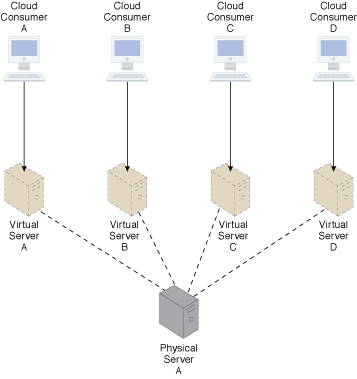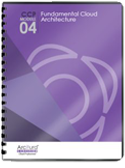Cloud Computing Patterns, Mechanisms > Sharing, Scaling and Elasticity Patterns > Shared Resources
Shared Resources (Erl, Naserpour)
How can the capacity of physical IT resources be used to its potential?

Problem
Allocating dedicated IT resources to individual consumers can be wasteful and underutilize their collective capacity.
Solution
Physical IT resources are shared by partitioning them into lower capacity virtual IT resources that are provisioned to multiple cloud consumers.
Application
Virtualization technology is used to create virtual instances of physical IT resources. Each virtualized IT resource can be assigned to a cloud consumer, while the underlying physical IT resource is shared.
Mechanisms
Audit Monitor, Cloud Storage Device, Cloud Usage Monitor, Container, Hypervisor, Logical Network Perimeter, Resource Replication, Virtual CPU, Virtual Infrastructure Manager, Virtual RAM, Virtual Server
Compound Patterns
Burst In, Burst Out to Private Cloud, Burst Out to Public Cloud, Cloud Authentication, Cloud Balancing, Elastic Environment, Infrastructure-as-a-Service (IaaS), Isolated Trust Boundary, Multitenant Environment, Platform-as-a-Service (PaaS), Private Cloud, Public Cloud, Resilient Environment, Resource Workload Management, Secure Burst Out to Private Cloud/Public Cloud, Software-as-a-Service (SaaS)

Each cloud consumer is allocated a virtual server instance of a single underlying physical server. In this case, the physical server is likely greater than if each cloud consumer were given its own physical server. However, the cost of one high-capacity physical server is lower than four medium-capacity physical servers and its processing potential will be utilized to a greater extent.
NIST Reference Architecture Mapping
This pattern relates to the highlighted parts of the NIST reference architecture, as follows:

This pattern is covered in CCP Module 4: Fundamental Cloud Architecture.
For more information regarding the Cloud Certified Professional (CCP) curriculum, visit www.arcitura.com/ccp.
This pattern is covered in CCP Module 17: Advanced Cloud Virtualization.
For more information regarding the Cloud Certified Professional (CCP) curriculum, visit www.arcitura.com/ccp.

